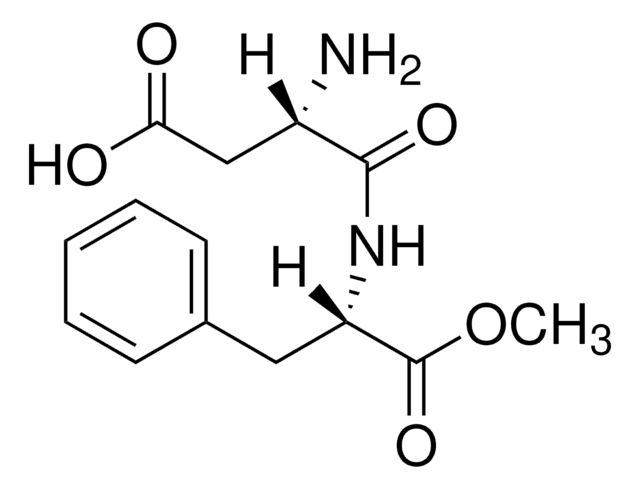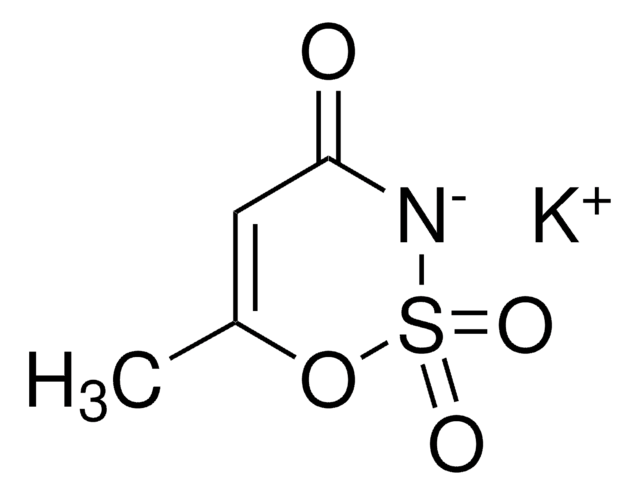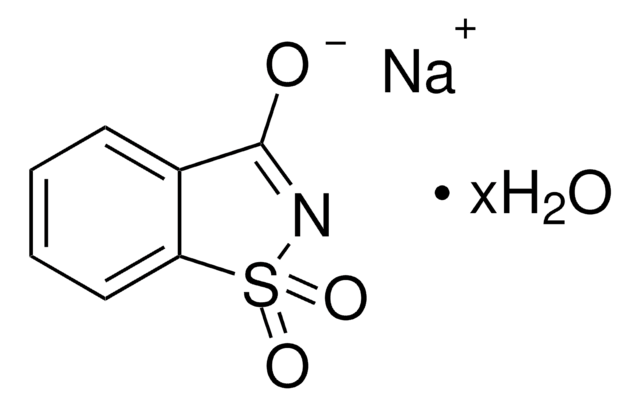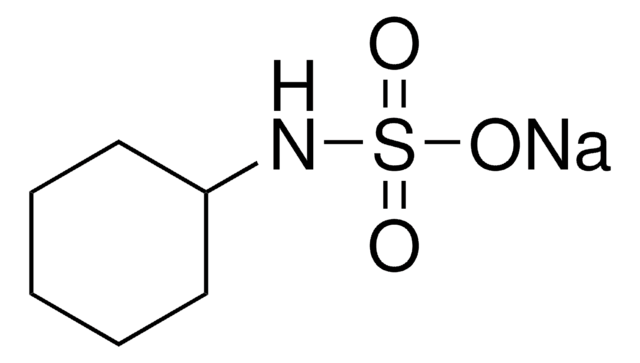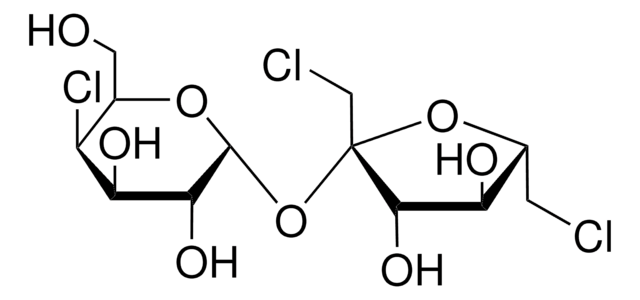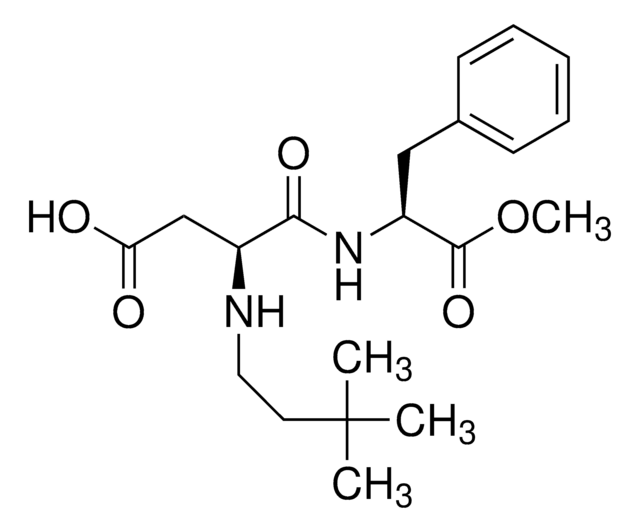Alle Fotos(1)
Wichtige Dokumente
04054
Acesulfam K
for food analysis, ≥99.0%
Synonym(e):
6-Methyl-1,2,3-oxathiazin-4(3H)-on-2,2-dioxid Kaliumsalz
Anmeldenzur Ansicht organisationsspezifischer und vertraglich vereinbarter Preise
Alle Fotos(1)
About This Item
Empirische Formel (Hill-System):
C4H4KNO4S
CAS-Nummer:
Molekulargewicht:
201.24
Beilstein:
3637857
EG-Nummer:
MDL-Nummer:
UNSPSC-Code:
12164500
PubChem Substanz-ID:
NACRES:
NA.21
Empfohlene Produkte
Qualität
for food analysis
Qualitätsniveau
Assay
≥99.0% (HPLC)
≥99.0%
Süße
200 × sucrose
Anwendung(en)
food and beverages
SMILES String
[K+].CC1=CC(=O)[N-]S(=O)(=O)O1
InChI
1S/C4H5NO4S.K/c1-3-2-4(6)5-10(7,8)9-3;/h2H,1H3,(H,5,6);/q;+1/p-1
InChIKey
WBZFUFAFFUEMEI-UHFFFAOYSA-M
Suchen Sie nach ähnlichen Produkten? Aufrufen Leitfaden zum Produktvergleich
Biochem./physiol. Wirkung
′New generation′, heat-stable sweetener that has not been suspected to cause cancer nor be genotoxic. Allelic variation of the Tas1r3 gene affects behavioral taste responses to this molecule, suggesting that it is a T1R3 receptor ligand.
Lagerklassenschlüssel
11 - Combustible Solids
WGK
WGK 1
Persönliche Schutzausrüstung
Eyeshields, Gloves, type N95 (US)
Hier finden Sie alle aktuellen Versionen:
Besitzen Sie dieses Produkt bereits?
In der Dokumentenbibliothek finden Sie die Dokumentation zu den Produkten, die Sie kürzlich erworben haben.
Kunden haben sich ebenfalls angesehen
Wei-Li Li et al.
Journal of molecular neuroscience : MN, 51(1), 225-236 (2013-04-23)
The sweet taste is of immense interest to scientists and has been intensively studied during the last two decades. However, the sweet preference modification and the related mechanisms are still unclear. In this study, we try to establish a mice
Mi-Sun Ha et al.
International journal of food sciences and nutrition, 64(6), 715-723 (2013-05-02)
Using a stepwise assessment of the exposure of Korean consumers to acesulfame K and sucralose, theoretical maximum daily intakes of the sweeteners were calculated using the Budget screening method, which resulted in values greater than the acceptable daily intakes (ADIs).
In search of a role for carbonation: is this a good or bad taste?
Catia Sternini
Gastroenterology, 145(3), 500-503 (2013-07-31)
Francesco Di Salle et al.
Gastroenterology, 145(3), 537-539 (2013-05-30)
Little is known about how CO2 affects neural processing of taste. We used functional magnetic resonance imaging to investigate the effects of carbonation on brain processing of sweet stimuli, which has relevance to studies of food selection and satiety. The
Hao Jin et al.
Cell, 184(1), 257-271 (2021-01-09)
Hardwired circuits encoding innate responses have emerged as an essential feature of the mammalian brain. Sweet and bitter evoke opposing predetermined behaviors. Sweet drives appetitive responses and consumption of energy-rich food sources, whereas bitter prevents ingestion of toxic chemicals. Here
Unser Team von Wissenschaftlern verfügt über Erfahrung in allen Forschungsbereichen einschließlich Life Science, Materialwissenschaften, chemischer Synthese, Chromatographie, Analytik und vielen mehr..
Setzen Sie sich mit dem technischen Dienst in Verbindung.